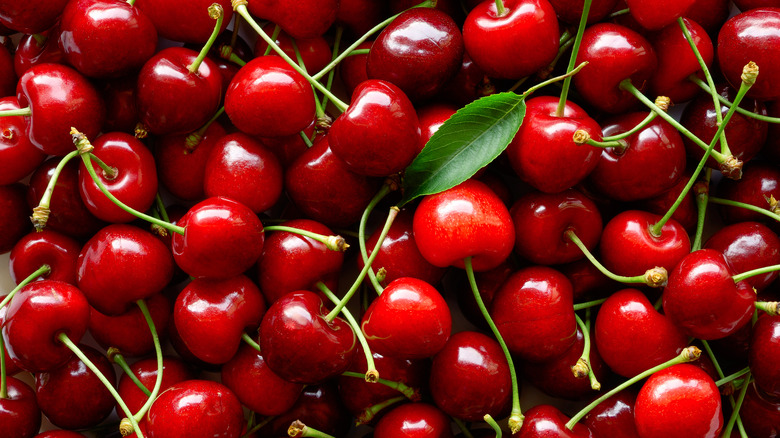The 4th Of July Food Incident That May Have Killed A US President
The Fourth of July commemorates the passage of the Declaration of Independence. Eerily enough, it also marks the death anniversary of three U.S. presidents. Zachary Taylor isn't one of them, but his death on July 9, 1850, may have been the result of something he ate on Independence Day just days before.
The story goes that the president indulged in a bounty of summer fruit, including cherries, at a Fourth of July celebration at the site of the as-yet-erected Washington Monument. He washed it all down with iced milk, a welcome refreshment in the sweltering Washington heat. Back at the White House, he drank multiple glasses of water. Sounds like a sensible day of snacking and hydrating, right? Evidently not. In the days that followed, he experienced severe stomach pains, foreshadowing his unexpected death after a short 16 months in office.
Historians are split between two theories. The first maintains that the president's death arose from cholera morbus born from bacteria in the beverages, while the second asserts that he died from gastrointestinal issues caused by the combination of milk and acidic cherries. Thankfully, modern-day stone fruit lovers don't have to worry too much about meeting the same fate.
A surfeit of cherries
If cherries were the cause of Zachary Taylor's death, he wouldn't be the only one. Thomas Lockey, a former head librarian of Oxford University's Bodleian Library, is said to have died from "a surfeit of cherries" in 1679. The same cause of death is linked to Catherine Douglas, Duchess of Queensberry, who died from allegedly overindulging in the stone fruit in 1777.
Before you swear off the tart red fruit for good, rest assured that death by cherry is highly unlikely. While their high fiber content might lead to a stomach ache, you would have to eat an unholy amount to spark a real medical emergency. The danger resides in the pit, which contains enough cyanide to potentially lead to death. The same goes for apricots, peaches, and other stone fruits.
You should be in the clear as long as you're not ingesting cracked slivers of pits or seeds. Speaking of which, now would be a good time to learn to pit stone fruits like a pro.
Don't miss out on cherry season
Assuming your fear of dying from an excess amount of cherries has been assuaged, July is a great time to make the most of the fruit while it's fresh and in season. There's no end to scrumptious cherry dessert recipes, whether you want to keep things classic by piling them into a cherry pie, layering them in a chocolate torte, or freezing them into cheesecake popsicles that probably would have sold like hotcakes on that scorching Fourth of July day in 1850.
Of course, one of the best ways to eat a ripe summer fruit is on its own. If you find yourself in the Pacific Northwest, Chelan cherries are the type you need for a sweet snack. If you're in New York or the Midwest, don't miss out on the mouth-puckeringly tart sour cherries (also known as Montmorency cherries) that fill markets in June and July. Whichever cherry variety you choose, you can pit them in a flash with a simple staw hack to take the fruit's poisonous core out of the equation.


